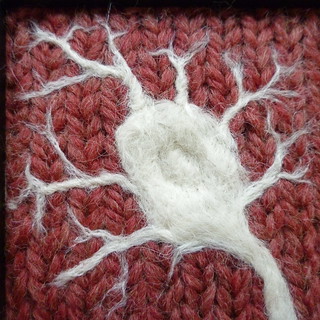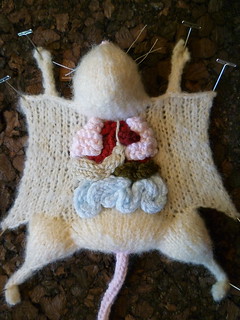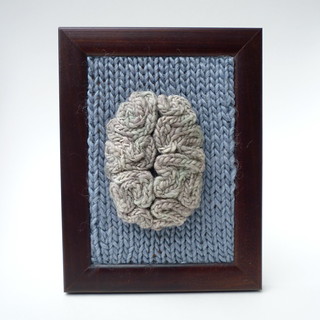
(Update below)
I write mostly about neuroscience, genetics and biotechnology. That means I spend most of my time talking to and writing about men.
In May of 2011 (chosen arbitrarily just because it was a year ago and I’m pretty sure I wasn’t thinking about this gender gap then), 89 percent of my phone interviews were with men.
I can think of a few reasons for this. One is that journalists typically talk to the senior leaders of labs, rather than the graduate students or postdocs who actually do the work. As you climb higher up the ladder of academic science, the male-to-female bias grows. According to the latest stats from the National Science Foundation, women earn 57 percent of all science and engineering undergraduate degrees and 41.1 percent of doctoral degrees. Yet the number of male PhDs in science jobs outnumbers females by two and a half times.
Another possible reason: Within science, the subfields with the most female-friendly sex ratios are: psychology (which employs twice as many women as men), political science (balanced ratio), and anthropology/sociology (balanced ratio). In contrast, for my pet topic, biology and life science, about twice as many jobs go to male versus female PhDs. Neuroscience, in particular, has a reputation for male domination. As of 2006, only 1 in 5 papers published in Nature Neuroscience — one of the field’s top journals — had a female corresponding author. A 2009 survey of neuroscience departments and programs reported that just 29 percent of tenure-track faculty are women. “So many of our best students and postdocs are women,” says Ben Barres, chair of neurobiology at Stanford. “But you don’t see them represented in our faculty. A lot of them are dropping out.”
Still, I’m beginning to wonder if maybe neuroscience is undergoing a female revolution.
When I began reporting on a story (out in yesterday’s Nature) about spidery brain cells known as microglia, I was shocked to find that many of this nascent subfield’s superstars are ladies. I interviewed 15 people for the story and 7 were women. (And many of those women have entirely female or female-dominated lab teams.) That may not seem like a big number, but compared to my typical story, it was striking (soft inside voices, pleasant demeanors, no last-minute re-schedulings or cancellations, hooray!). There are other signs of change, too. The most timely: Yesterday morning, the Kavli Foundation granted two of its prestigious awards to female neuroscientists Cori Bargmann and Ann Graybiel.
This is by no means a scientific assessment, and despite my anecdotes and selective stats, women are still well outnumbered in neuroscience. But if we assume for a moment that neuroscience is inching toward gender equality (at least compared with, say, engineering or math or physics), and that certain subfields, like microglia, are able to attract an equal number of men and women, then it’s interesting to ask why.
Fellow neuroscience journalist David Dobbs chalks it up to the interdisciplinary nature of neuroscience. “With so many coming to it from other fields at will, it’s more fluid socially,” he says.* Neuroscience heavyweight Huda Zoghbi cites two other reasons for the uptrend. One, there are now many more big-time success stories of women scientists who serve as role models for students; and two, academic institutions and funding agencies are choosing more women for leadership positions. “There is a lot more to do to catch up but one can tangibly feel the positive trend,” Zoghbi says.
 All seems plausible enough to me. But what about within a field — what makes women attracted to particular research topics? I posed the question to all of those female (and male) microglia experts. They gave me surprisingly similar answers. “Obviously the first ten possibilities are coincidence, but number 11 might be that this area is so new that it isn’t clogged up with dogma or with a lot of major lab representation,” says Richard Ransohoff of the Cleveland Clinic. In other words, if you’re a young neuroscientist — and young neuroscientists are just as likely to be male as female — then you’re going to be attracted to a field with a lot of unanswered questions. Every discovery you make will be new and noteworthy, giving you wider visibility.
All seems plausible enough to me. But what about within a field — what makes women attracted to particular research topics? I posed the question to all of those female (and male) microglia experts. They gave me surprisingly similar answers. “Obviously the first ten possibilities are coincidence, but number 11 might be that this area is so new that it isn’t clogged up with dogma or with a lot of major lab representation,” says Richard Ransohoff of the Cleveland Clinic. In other words, if you’re a young neuroscientist — and young neuroscientists are just as likely to be male as female — then you’re going to be attracted to a field with a lot of unanswered questions. Every discovery you make will be new and noteworthy, giving you wider visibility.
Finally, there may also be something of what I’ll call the “avoid dicks” factor. As Amanda Sierra of the Basque Foundation for Science told me, rather bluntly: The microglia field is “open for novel ideas, and somewhere where you can put all your effort without any alpha male pressure.” Another, Marie-Ève Tremblay of the University of Wisconsin, put a more positive spin on the same sentiment: “We are all young women helping each other a lot, trying to collaborate rather than just compete.”
Update, 6/12/12 — The Society for Neuroscience informs me that its last member survey, done in 2011, showed that 43 percent of members were female. Perhaps another clue suggesting the revolution has arrived…
—
*This discussion with David happened via Twitter direct message, as so many great discussions do. His actual quote was: “w so many coming to it from other fields at will; more fluid socially.”
All images from estonia76 on Flickr

Brilliant knitting there. I mean it. Brilliant thinking and writing too, but we’re used to that.
Heartening to read. Thanks.
I first will say that my daughter-in-law pointed me to this blog post, and I thank her! I’m a long time neuroscientist (female) now age 70, and I would suggest another reason that “microglia” is a good subject for women is that it’s way out there! It’s not only not competitive, it’s also a brand new area that many people have no clue how to approach. It’s going to require great new ideas and challenging the ideas of the old guard. GO WOMEN!! PUSH THE BOUNDARIES!!
As a fell-out-of-the-science pipeline woman, I thoroughly enjoyed this post.
I am informed that Ben Barres was formerly known as Barbara Barres but expected to do better as a man. I would really like to know if he thinks it has made a difference.
That’s true, Jennie. You can read more about Ben’s story here: http://www.nature.com/nature/journal/v442/n7099/full/442133a.html
Or, for those of us without a subscription to Nature,
http://eclectic.ss.uci.edu/~drwhite/pw/CounteringGenderDiscriminationinScience.pdf
Thanks! Well worth reading.
Great blog (first time visitor) and utterly amazing knitting! I’m inspired on many fronts 🙂